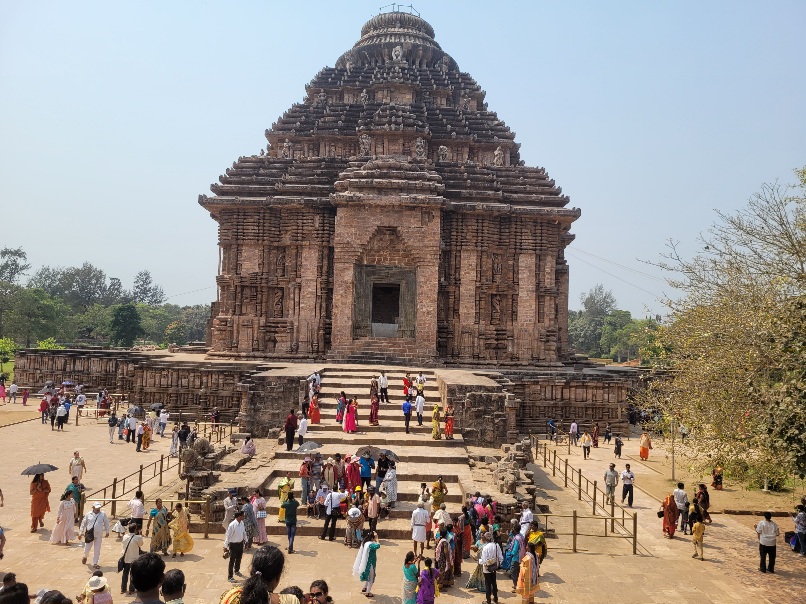Among the various destinations to explore in Odisha, one particular site stands out prominently. Whenever you are journeying in Odisha, there’s unanimous advice to visit this place, hailed for its magnificence and grand scale—the Konark Sun Temple, also known as Konark Surya Mandir. Situated in Konark town, approximately 35 kms from Puri and 65 kms state capital Bhubaneswar, it is the remnants of a temple constructed in the 13th century.
If you are traveling in Odisha, a visit to the Konark Sun Temple is indispensable. To overlook it is to leave your Odisha experience incomplete. Recognized as a UNESCO World Heritage Site, this temple holds cultural significance that transcends into the 21st century. To delve into its allure further, it’s crucial to explore its history, architecture, and the reasons behind its revered status.

Post Contents
Sun worship in Hindu culture
Hindus engage in the worship of a number of deities, each symbolizing different facets of nature and life events. Among these revered entities, Lord Surya, the Hindu sun god, holds a position of great power. Also known as Aditya or Surya Bhagavan, Lord Surya serves as the embodiment of the sun in Hindu astrology and stands as the principal deity among the nine classical planets known as the Navagraha. These nine planets, as per Vedic tradition,are Mercury, Mars, Venus, Jupiter, Saturn, the Sun, and the Moon.
Lord Surya is revered as a creator god, representing the essence of life in the universe. According to Hindu beliefs, Surya traverses the sky aboard a sacred golden chariot, dispelling the demons of the night and darkness. Accompanied at times by the goddesses Usha and Pratyusha, Surya’s chariot is drawn by seven horses, symbolizing the sacred number seven. This number corresponds to the colors of the rainbow spectrum (red, orange, yellow, green, blue, indigo, violet) and the seven chakras integral to Hindu doctrinal systems.
References to sun worship are found in the puranas, with the Ramayana recounting Sage Agastya initiating Rama into sun worship through the Aditya Hridaya Mantra. Varahamirhira, an astronomer and astrologer, delves into the intricacies of ceremonies related to the installation of the Sun’s icon. In the 1st millennium CE, the courtier Mayura composed the Surya Satakam, a poetic work praising Surya, during the reign of Harshavardhana.

Related Post: Visiting Katarmal Sun Temple in the Kumaon
Sun Temples across India
In ancient and medieval India, kings undertook the construction of some of the most remarkable sun temples in the country. Renowned for their architectural splendor, these temples were considered among the finest in India during their era. Presently, these sun temples continue to attract tourists who marvel at their exquisite architecture. While some of these temples have succumbed to the passage of time and now lie in ruins, those that have been preserved are well worth a visit.
What makes these sun temples truly extraordinary is their distinctive construction and incredible architecture. Some were crafted in such a way that, during sunrise, the first rays of the sun invariably illuminated the temple. The construction of these sun temples harnessed the ancient Indian sciences of Shilpashastra and Vastushastra, adding a layer of cultural and scientific significance to their existence.
Sun temples scattered across India reflect the distinctive characteristics of their respective regions. The Dakshina-arka Temple, situated in the Gangetic Plains and recognized as a site for ancestral offerings, stands as a notable example. Other renowned sun temples in India include the Suryanaar Koyil in South India, Arasavilli and Konark on the East Coast, Modhera in Gujarat representing Western India, Surya Pahar in the North Eastern region, the Katarmal Sun Temple in the Kumaon Himalayas and Unao in Central India.

The Konark Sun Temple
As you embark on your journey to the Konark Sun Temple in Odisha, you are greeted by an architectural masterpiece that transcends time and culture. The intricately carved temple, dedicated to the sun god Surya, stands as a witness to ancient craftsmanship and religious devotion. As you explore its sun-kissed walls adorned with symbolic sculptures and intricate carvings, you’ll find yourself immersed in the rich history and mythology that surrounds this sacred site.
The temple’s unique construction, designed in the shape of a colossal chariot with wheels and horses, adds to its allure. Be prepared to be enchanted by the fascinating stories and legends that echo through the centuries, making your visit not just a sightseeing experience but a spiritual and cultural journey. In this comprehensive guide, we will delve into the captivating history, architectural marvels, and interesting facts that make the Konark Sun Temple a must-visit destination.
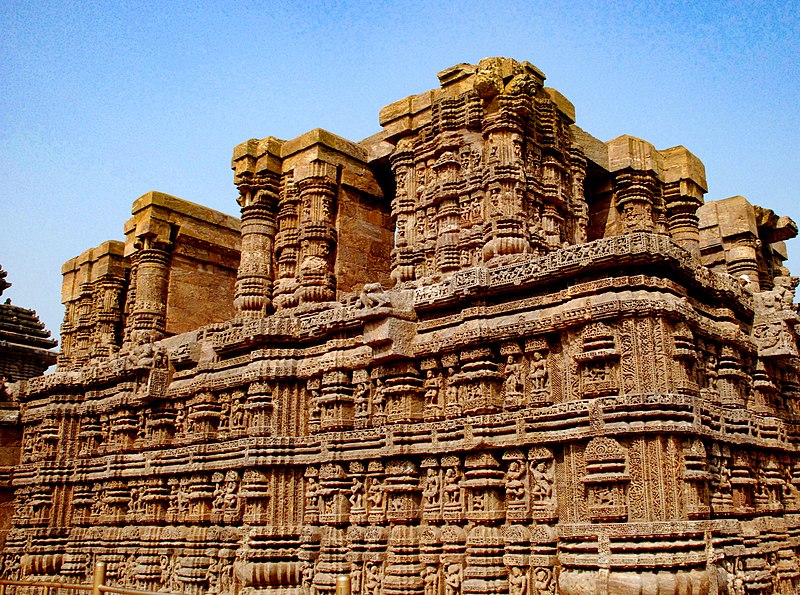
History of Konark Sun Temple
The construction of Konark Sun Temple is credited to Narasimhadeva I of the Eastern Ganga dynasty, who ruled from 1238 to 1264 CE. Notably, it stands as one of the rare Hindu temples with preserved planning and construction records in Sanskrit, written in the Odia script on palm leaf manuscripts. Unearthed in a village during the 1960s, these manuscripts shed light on the meticulous construction supervised by one Shiva Samantaraya Mahapatra under the king’s sponsorship. Positioned near an older Surya temple, the newer structure incorporated the sanctum’s sculpture from the original temple.
Copper plate inscriptions from that era often refer to the Konark temple as the “great cottage.” According to historian James Harle, the 13th-century temple comprised the Nata Mandapa (dance hall) and the great temple (deula), with only the smaller mandapa surviving today. Harle notes that the original temple likely reached a towering height of around 225 feet, but today, only remnants of its walls and decorative moldings remain due to the collapse of the great deula sometime in the late 16th century or afterward.

Also Read: 10 must-visit temples of Bhubaneswar
Architecture of Konark Sun Temple
The Konark Sun Temple is a classic example of the Odisha style of architecture, also known as Kalinga architecture. The temple is designed in the shape of a chariot with 24 elaborately carved stone wheels, each about 12 feet in diameter. The wheels serve as sundials, accurately measuring time to a minute. The temple’s main structure, known as the deula, is supported by a high terrace and features intricate carvings and sculptures.
The temple complex also includes other structures like the Nata Mandapa, or dance hall, and the Bhoga Mandapa, or dining hall. The walls of the temple are adorned with ornate reliefs depicting various Hindu deities, mythological narratives, and scenes from daily life. The temple’s architecture follows the traditional Hindu temple design, with a square plan and a circular mandala structure.
Here are some remarkable features of Konark Sun Temple:

Jagmohana or Audience Hall
The Jagmohana, also known as the audience hall, is an enormous structure with intricately carved door jambs. Made of Chlorite stone, these green door jambs feature elaborate carvings that showcase the exquisite craftsmanship of the temple’s builders. The rest of the building is constructed using Khondalite or Laterite stone, which had to be transported from across the Chandrabhaga river. Scholars believe that the stones were first smoothed and then engraved in situ.
Bhoga Mandapa
Adjacent to the temple, you will find a platform with drains and water channels. This area is believed to have served as the Bhoga Mandapa, a kitchen and dining area for the temple. Surrounding the Bhoga Mandapa are two wells, which likely provided water for various temple activities.
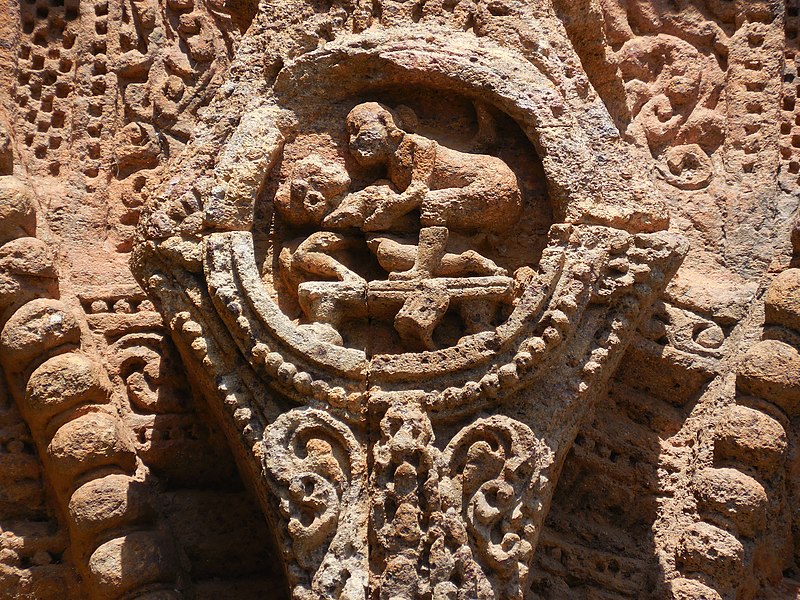
Erotica or Maithuna Figures
One of the most intriguing aspects of the Konark Sun Temple is the presence of erotic sculptures. These sculptures, known as Maithuna figures, depict love, romance, and sensuality. They are intricately carved at eye level in the middle section of the temple. The presence of these sculptures reflects the liberal attitude towards sexuality in ancient Indian society and adds an element of intrigue to the temple’s artwork.
Chandrabhaga Tank
The Konark Sun Temple was once located near the Chandrabhaga River, which flowed into the sea. Today, a small tank known as the Chandrabhaga Tank serves as a reminder of the temple’s historical connection to the river. Pilgrims often take a sacred plunge in this tank, and the nearby Ramchandi temple and the sea offer additional attractions. The Chandrabhaga Mela, celebrated on Magh Shukla Saptami, adds a festive spirit to the region.

Do Read: Visiting Bhubaneswar? The Khandagiri and Udayagiri Caves are a Must-See
The legend of Konark Sun Temple
Legends and fables surround the Konark Sun Temple, adding an extra layer of intrigue to its magnificence. One such legend tells the tale of a bright 12-year-old boy named Dharmapada, who sacrificed his life to save the lives of 1200 craftsmen.
According to the legend, King Narasimhadeva wanted to build a grand temple dedicated to the Sun God near the sea. The master architect, Bisu Maharana, was assigned the task of constructing this grand temple. On his 12th birthday, Dharmapada, the son of Bisu Maharana, expressed his desire to meet his father and see the temple.
Upon witnessing the temple’s magnificent structure, Dharmapada became determined to help his father complete it. When the craftsmen faced difficulty placing the Kalasa (cupping stone) on the top of the temple, Dharmapada, with his knowledge of temple architecture, found a solution. In a heroic act, he sacrificed his own life by jumping off the top of the temple, ensuring the completion of the temple and the safety of the craftsmen.
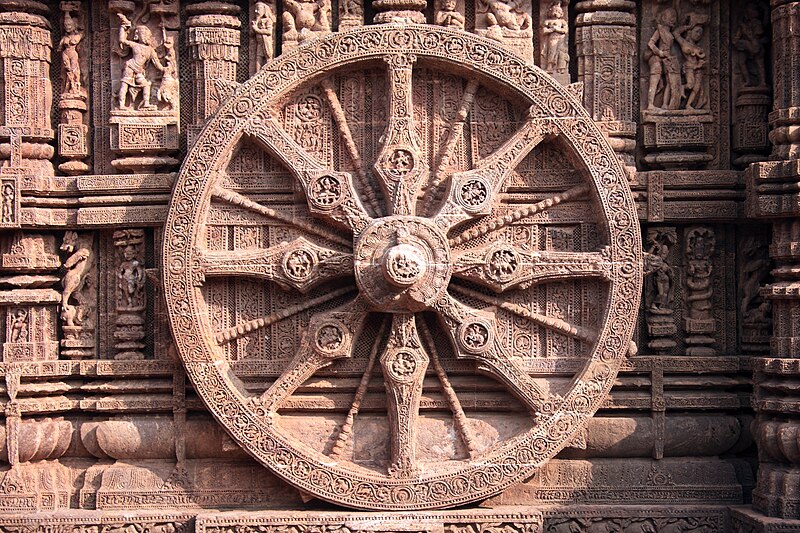
Some fascinating features of Konark Sun Temple
1. The Wheel of Time
In the center of the Konark Sun Temple is an amazing sundial. The chariot wheel, with its eight spokes, cleverly symbolizes the 24 hours in a day. Watching the shadows made by the spokes helps people know the time precisely, down to the minutes. This smart way of telling time existed before watches were around, revealing the advanced wisdom of ancient Indian astronomers and builders. The Konark Sun Temple’s sundial is like a time-traveling clock, teaching us about the brilliant minds of the past..
2. The Twelve Pairs of Wheels
As you marvel at the grandeur of the Konark Sun Temple, you cannot miss the twelve stone-carved wheels adorning the structure. Each wheel symbolizes a month of the year, capturing the cyclical nature of time and the changing seasons.

3. The Seven Horses
The temple’s design includes a magnificent sun chariot drawn by seven horses. Each horse represents a day of the week, symbolizing the Sun’s journey across the sky. This artistic representation portrays the significance of time and its connection to the celestial movements.
4. UNESCO World Heritage Site
Recognizing its exceptional architectural value and cultural significance, the Konark Sun Temple is designated as a UNESCO World Heritage Site. It stands as a testament to the rich heritage of India and attracts visitors from all over the world
5. Depiction of Wealth and Power
As you approach the entrance of the Sun Temple, you will notice the presence of two lions, each crushing an elephant. This symbolic representation of power and wealth reflects the challenges faced by individuals in their pursuit of material prosperity and dominance. The intricate carvings send a powerful message about the transient nature of worldly possessions.
6. The Black Pagoda
During the colonial era, European sailors referred to the Konark Sun Temple as the “Black Pagoda” or “Kaala Pagoda” due to its dark color. This name served as a significant landmark for sailors navigating the Bay of Bengal. The temple’s close proximity to the shore made it a recognizable feature in the region.

Do Read: Jageshwar Dham: The Sacred Abode of Lord Shiva in Kumaon
Other Temples and Monuments
Within the Konark Sun Temple complex, you can find many subsidiary shrines and monuments surrounding the main temple, each contributing to the site’s historical richness. Here are some of them.
Mayadevi Temple: Notable among these structures is the Mayadevi Temple, situated to the west. Dating back to the late 11th century, it predates the main temple and comprises a sanctuary, a mandapa, and an open platform. Originally believed to be dedicated to Surya’s wife, later studies indicated that it was an older Surya temple incorporated into the complex when the grand temple was constructed. The Mayadevi Temple boasts intricate carvings, featuring a square mandapa overlain by a sapta-ratha, and its sanctum houses a Nataraja, a damaged Surya, and representations of Agni, Varuna, Vishnu, and Vayu.
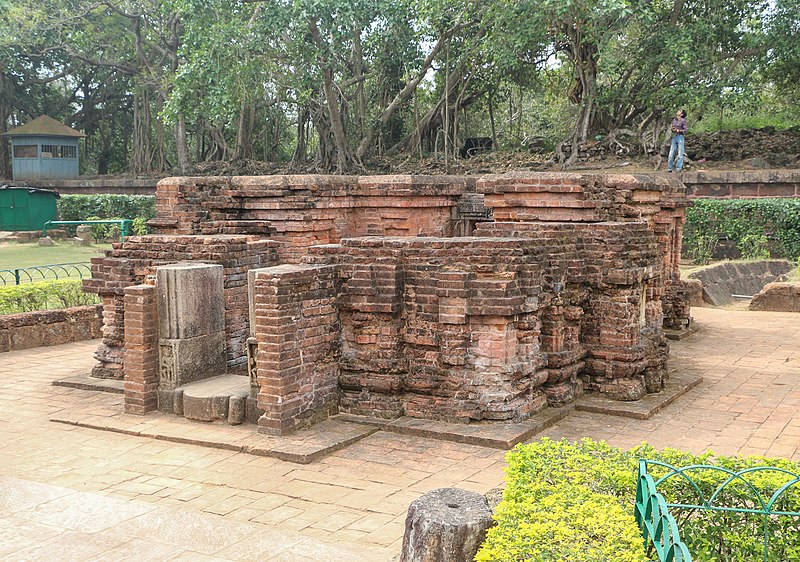
Vaishnava Temple: Adjacent to the Mayadevi Temple is the Vaishnava Temple, unearthed during excavations in 1956. This discovery debunked the belief that the Konark Sun Temple exclusively honored the soura cult, as it revealed the complex’s reverence for various Hindu traditions. The Vaishnava Temple, a small structure adorned with sculptures of Balarama, Varaha, and Vamana–Trivikrama, signifies its role as a Vaishnavite temple, complete with depictions of these deities in traditional attire and jewelry. Though some niches lack images, the temple’s sanctum, unfortunately, doesn’t have its main idol.

Rosasala or Kitchen: Adding a distinctive touch to the complex is the Kitchen, situated south of the bhoga mandapa. Discovered in excavations during the 1950s, this structure encompasses water conduits, cisterns, drains, a cooking floor, and triple ovens (chulahs). Its purpose remains speculative, possibly serving festive occasions or acting as part of a community feeding hall. According to Thomas Donaldson, the kitchen complex might have been added slightly later than the original temple, contributing another layer to the evolving history of the Konark Sun Temple.
Festivals and Cultural Events
The Konark Sun Temple is not just a historical site; it is also a hub of cultural festivities. The Konark Dance Festival, held annually from 1st to 5th December, celebrates India’s classical and traditional dance forms. The festival takes place in the amphitheater backdrop of the Konark Temple, where artists showcase their talent in front of a mesmerized audience. The festival also features a marketplace offering handcrafted products, handicrafts, and a variety of Indian cuisines.
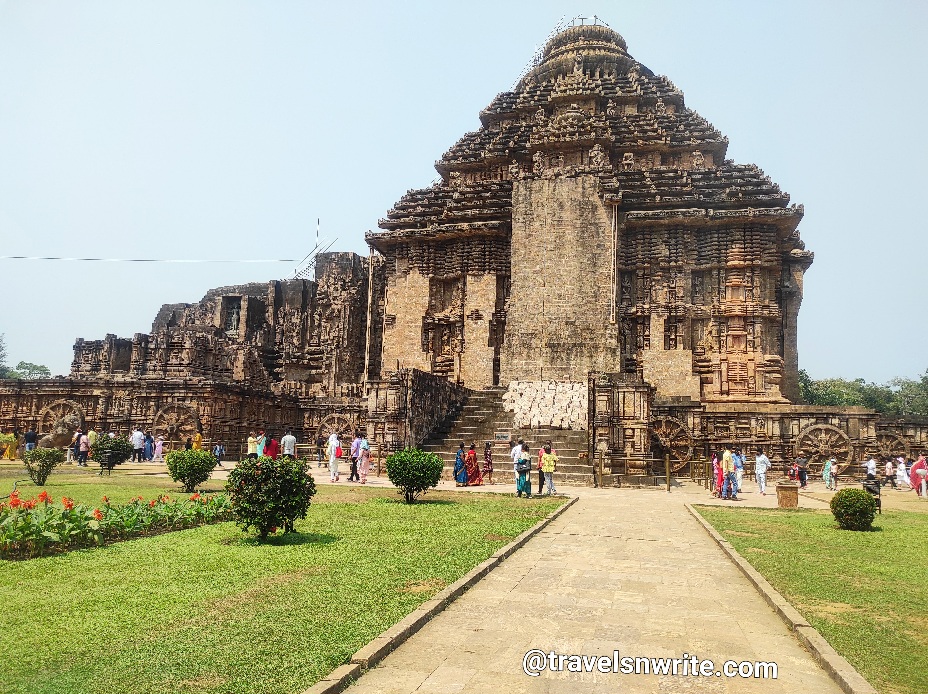
You May also Like: Exploring the Cultural Tapestry: Raghurajpur Heritage Village
When to Visit Konark Sun Temple
The best time to visit the Konark Sun Temple is between September and March when the weather is pleasant. Avoid visiting during the summer months, as the heat and humidity can be intense, making it challenging to explore the temple comfortably.
How To Reach Konark Sun Temple
The Konark Sun Temple is located in Odisha,. The nearest airport is Biju Patnaik International Airport in Bhubaneswar, which is approximately 60 km away. From Bhubaneswar, you can hire a taxi or take a bus to reach Konark. If you prefer traveling by train, Puri is the nearest railway station, situated about 35 km from Konark. From Puri, you can hire a taxi or take a local bus to reach the temple.
Conclusion
The Konark Sun Temple is a demonstration of India’s architectural legacy, beckoning history enthusiasts and spiritual seekers. Its intricate carvings, remarkable design, and legends make it a must-visit destination. Exploring this magnificent temple transports you to an era where art, culture, and devotion converged, creating a timeless masterpiece. Plan your trip to Konark and immerse yourself in the splendor of this architectural marvel, where the echoes of the past resonate in every carved detail.

